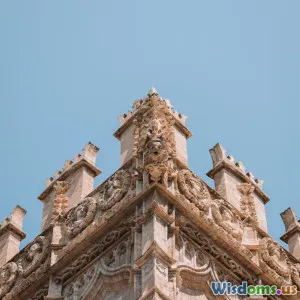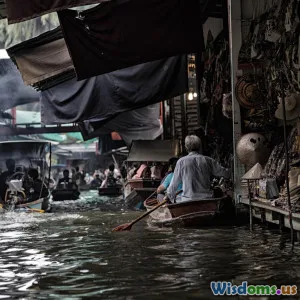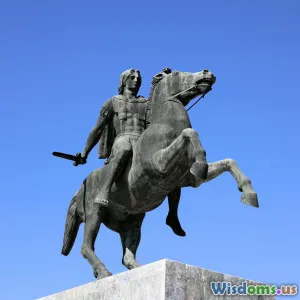
Secrets Behind Silk Roads Role in Early Globalization
9 min read Explore the Silk Road’s pivotal role in fostering early globalization through trade, cultural exchange, and technological diffusion across continents. (0 Reviews)
Secrets Behind Silk Road’s Role in Early Globalization
Introduction
Imagine a world without instant global communication or air travel. How did ancient civilizations share ideas, goods, and cultures over thousands of miles? The answer lies in the legendary Silk Road — a series of interconnected trade routes weaving through Asia, the Middle East, and Europe, enabling unprecedented interaction for over a millennium.
Often romanticized as a path for exotic silk and spices, the Silk Road was far more than a mere trade route. It was the backbone of early globalization, fostering economic prosperity, cultural blending, technological innovation, and even the spread of religions. But what exactly made the Silk Road instrumental in integrating vast, disparate societies? This article uncovers the hidden secrets behind its transformative role in early globalization.
The Backbone of Early Global Trade
Connecting Antiquity: Geography and Trade Networks
Stretching roughly 4,000 miles from China’s Han Dynasty capital, Chang’an, to the Mediterranean city of Antioch, the Silk Road was not a single road but a complex network linking East and West. These routes passed through harsh deserts like the Taklamakan, towering mountain ranges such as the Pamirs, and bustling caravan cities—Oasis trading hubs like Samarkand and Bukhara played critical roles.
Silk was one famed commodity, symbolizing luxury and prestige in Roman and later European markets. Yet, the trade was multi-dimensional:
- From China: silk, porcelain, tea, paper
- From Central Asia: precious stones, horses, furs
- From India: spices, textiles, ivory
- From the Middle East and Europe: glassware, precious metals, artworks
For example, Byzantine silk weaving techniques were deeply influenced by Chinese silks initially obtained through these routes.
Economic Impact on Civilizations
The vast exchange of goods not only created wealth but also fostered economic interdependency among empires. Between 200 BCE and 1400 CE, this trade network facilitated the flow of Chinese silk, Indian spices, and Persian silver, stimulating urban growth and merchant classes.
Historian Valerie Hansen notes that the Silk Road boosted cities like Chang’an, Kashgar, and Palmyra into flourishing cosmopolitan centers. These hubs offered lodging, markets, and services vital for merchants and travelers. Evidence from caravanserai (roadside inns) highlights the volume of traffic and economic vitality surrounding the routes.
Moreover, specialized merchant groups like the Sogdians (originating around modern Uzbekistan) became pivotal middlemen, managing routes and protecting trade ventures across unknown territories.
Cultural Exchange: The Silk Road as a Global Melting Pot
Transmission of Ideas and Religions
Beyond goods, the Silk Road was an artery through which religions and philosophies traversed continents.
- Buddhism traveled from India to East Asia, evidenced by Buddhist art and scriptures found in the Dunhuang caves along the Silk Road.
- Zoroastrianism and later Islam spread into Central Asia, influencing local customs.
- Christianity moved along the western Silk Road branches, reaching communities in China by the Tang Dynasty era.
This multi-directional flow fostered tolerance and blendings. For instance, Buddhist monasteries doubled as education centers and resting places for travelers, showcasing a confluence of religious practice and community support.
Artistic and Intellectual Diffusion
Silk Road exchanges facilitated cross-pollination of art styles and technological knowledge. Motifs from Greco-Roman art merged with Persian and Chinese artistic traditions, influencing Buddhist sculpture styles seen today.
Technological innovations such as papermaking techniques, originally Chinese, reached the Middle East by the 8th century, revolutionizing information dissemination. Similarly, gunpowder, another Chinese invention, eventually transformed warfare globally after spreading along these routes.
The spread of musical instruments, like the lute, also reflects how cultural staples migrated and evolved through interactions on the Silk Road.
Technological and Logistical Secrets That Made It Work
Infrastructure Innovations
Maintaining such an extensive network across diverse landscapes demanded ingenuity.
Camel caravans capable of carrying heavy loads over desert expanses became a practical necessity. Camel saddles were innovated to increase cargo capacity and protect both animals and goods.
Caravanserais dotted along routes functioned not only as rest stops but as vital storage and communication centers, reflecting early forms of supply chain management.
Political Alliances and Protection
Empires recognized the importance of keeping these trade arteries safe. The Pax Mongolica during the 13th and 14th centuries particularly exemplifies this; Mongol rulers enforced laws and secured routes, allowing merchants to travel with reduced risk of banditry.
This security was paramount in allowing the free flow of goods and ideas, supported by embassy exchanges and diplomatic contacts across continents.
The Silk Road Legacy in Modern Globalization
Connecting Past and Present
The principles underlying the Silk Road—cross-border trade, cultural exchanges, and cooperation—are remarkably echoed in today’s globalization.
Modern initiatives, such as China’s Belt and Road Initiative, consciously revisit Silk Road routes to revive economic and infrastructural connectivity across Eurasia.
Lessons in Cultural Respect and Cooperation
The Silk Road demonstrates how global prosperity hinges on mutual respect and understanding between diverse cultures, despite linguistic, religious, or ethnic differences.
As scholar Peter Frankopan eloquently described, the Silk Road “is not just a route of commerce, it’s a bridge between worlds.” Learning from this early integration aids today’s interconnected challenges.
Conclusion
The Silk Road was far more than an ancient trading route for silk and spices; it was a dynamic conduit of early globalization shaping economic trends, cultural landscapes, and technological progress for over a thousand years. Its secret lay in connecting peoples rather than just places — fostering the exchange of wealth, ideas, innovations, and spiritual traditions.
These lessons resonate today as we navigate a increasingly interconnected world. Understanding the Silk Road’s multifaceted legacy offers insight into how commerce and cultural openness can break down barriers and enrich civilizations on a global scale.
References:
- Valerie Hansen, The Silk Road: A New History (2012)
- Peter Frankopan, The Silk Roads: A New History of the World (2015)
- Xinru Liu, The Silk Road in World History (2010)
- Multiple sources from UNESCO and academic journals on Silk Road archaeology
Author’s Note
By peeling back the layers of history woven through the Silk Road, we uncover a blueprint for global interconnectedness, one that ancient empires carved through deserts and mountains and that continues to inspire global unity today.
Rate the Post
User Reviews
Popular Posts




















